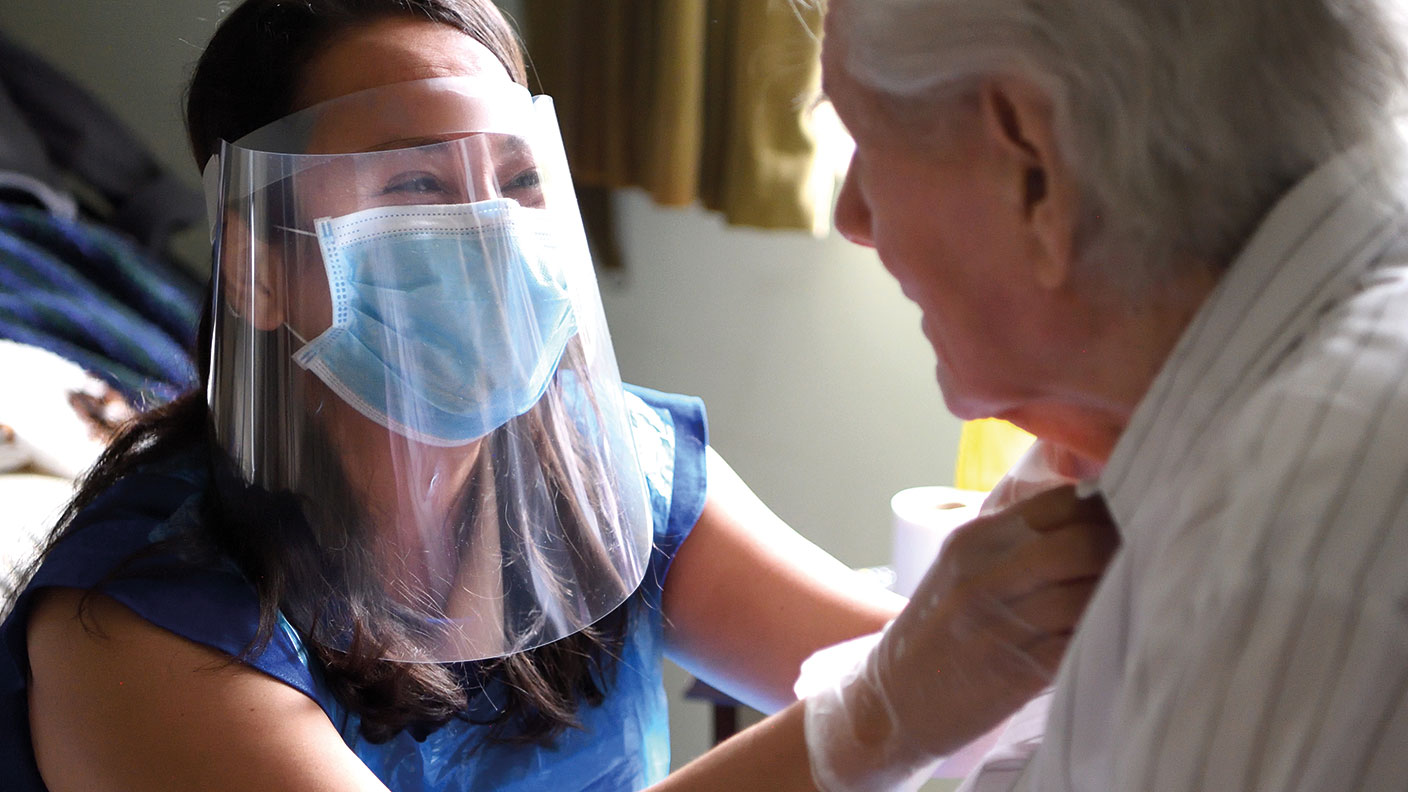Two funds that will help ensure a brighter outlook for care homes
Two listed real-estate investment trusts in the care-home sector look attractively valued and offer a decent income too, says Max King.

The two listed real-estate investment trusts (Reits) that own care homes, Impact Healthcare (LSE: IHR), with £360m of assets, and Target Healthcare (LSE: THRL) with £520m, have come through the Covid-19 crisis well. The stocks have fallen by 6% in six months. The former trades on a 4% discount to net asset value (NAV) and the latter a 5% premium. They both yield over 6%. The result is attractive but not too-good-to-be-true valuations.
The cost of care for the elderly has become a burning political issue. In 2019, £16.5bn was spent providing for around 450,000 elderly residents of 12,000 care homes. About 3.2 million people in Britain are over 80 and that number is expected to grow steadily over the next 20 years. Demand for beds in care homes is rising. Accountancy group Grant Thornton projects long-term growth of about 1.8% per annum, which, with existing homes full, requires new capacity.
Learning the lessons of the 1990s
Capacity reached 550,000 in 1997 after a decade of strong growth largely as the result of the construction of purpose-built, single-storey, specialist homes by listed private-sector companies. The new Blair government, however, disliked the idea that investors and entrepreneurs, such as Duncan Bannatyne, were prospering at public expense, since most of the places were filled by local authorities and the NHS. So they squeezed the providers by limiting the reimbursement from the Treasury, while other government measures raised staff costs. Capacity fell by 20% over the next decade, which ought to make the private sector wary of being asked to help solve the crisis in elderly care all over again.Fortunately, Impact and Target are not getting carried away. The business model of both is to own the homes but rent them to specialist operators. The number of beds owned by Impact has more than doubled to 5,600 in three years and the number of properties has nearly doubled to 104. But expansion has been funded by equity, not debt. Eleven tenants provide a contracted rent of nearly £30m, resulting in a return on capital of 8.8%. All of the rent due in the year to date has been received.
MoneyWeek
Subscribe to MoneyWeek today and get your first six magazine issues absolutely FREE

Sign up to Money Morning
Don't miss the latest investment and personal finances news, market analysis, plus money-saving tips with our free twice-daily newsletter
Don't miss the latest investment and personal finances news, market analysis, plus money-saving tips with our free twice-daily newsletter
Just six homes had some residents testing positive for Covid-19, and all were free of it by the end of July. Occupancy levels dropped by 8% between March and the end of June but have now started to recover. Tenants’ costs rose sharply as a result of the increased expense of agency staffing, protective equipment and cleaning, but are now coming down. With an average increase in weekly fees of 12.5% in the year to April, the tenants can comfortably afford their steadily increasing rents. Only a handful of Target’s 71 homes have been affected by Covid-19, with the infection rate falling from a peak of 3.2% of its 4,925 beds to under 0.3%. About 96% of its rents for the second quarter have been received. Despite this, like-for-like rental income increased 0.4% in the last quarter, allowing a marginal increase in NAV even after paying a quarterly dividend. Meanwhile, £43.6m of rental income, expected to increase by 8.7% this year, provides a return on capital very similar to Impact. Target has net debt of around 20% of gross assets, so an equity issue to fund further expansion is likely.
Target looks more expensive but this may reflect the quality of its portfolio: larger than Impact’s and all purpose-built. With fees rising faster than costs, the dividends of both look likely to increase steadily. Both shares look attractive for yield and capital growth but the potential for political interference, well-meaning or not, should not be ignored.
Get the latest financial news, insights and expert analysis from our award-winning MoneyWeek team, to help you understand what really matters when it comes to your finances.

Max has an Economics degree from the University of Cambridge and is a chartered accountant. He worked at Investec Asset Management for 12 years, managing multi-asset funds investing in internally and externally managed funds, including investment trusts. This included a fund of investment trusts which grew to £120m+. Max has managed ten investment trusts (winning many awards) and sat on the boards of three trusts – two directorships are still active.
After 39 years in financial services, including 30 as a professional fund manager, Max took semi-retirement in 2017. Max has been a MoneyWeek columnist since 2016 writing about investment funds and more generally on markets online, plus occasional opinion pieces. He also writes for the Investment Trust Handbook each year and has contributed to The Daily Telegraph and other publications. See here for details of current investments held by Max.
-
 Rightmove: Asking prices set to rise 2% in 2026 after post-Budget market rebound
Rightmove: Asking prices set to rise 2% in 2026 after post-Budget market reboundBuyers and sellers who held off in anticipation of the Budget will come back to the market and contribute to asking prices increasing next year, according to Rightmove
-
 Coreweave is on borrowed time
Coreweave is on borrowed timeAI infrastructure firm Coreweave is heading for trouble and is absurdly pricey, says Matthew Partridge
-
 Coreweave is on borrowed time
Coreweave is on borrowed timeAI infrastructure firm Coreweave is heading for trouble and is absurdly pricey, says Matthew Partridge
-
 Renewable energy funds are stuck between a ROC and a hard place
Renewable energy funds are stuck between a ROC and a hard placeRenewable energy funds were hit hard by the government’s subsidy changes, but they have only themselves to blame for their failure to build trust with investors
-
 Profit from document shredding with Restore
Profit from document shredding with RestoreRestore operates in a niche, but essential market. The business has exciting potential over the coming years, says Rupert Hargreaves
-
 The war dividend – how to invest in defence stocks as the world arms up
The war dividend – how to invest in defence stocks as the world arms upWestern governments are back on a war footing. Investors should be prepared, too, says Jamie Ward
-
 Literacy Capital: A trust where great returns fund a good cause
Literacy Capital: A trust where great returns fund a good causeThere’s plenty to like about specialist private-equity trust Literacy Capital, says Max King
-
 An AI bust could hit private credit – could it cause a financial crisis?
An AI bust could hit private credit – could it cause a financial crisis?Opinion Private credit is playing a key role in funding data centres. It may be the first to take the hit if the AI boom ends, says Cris Sholto Heaton
-
 8 of the best ski chalets for sale now
8 of the best ski chalets for sale nowThe best ski chalets on the market – from a traditional Alpine-style chalet in Switzerland to an award-winning Modernist building in Japan’s exclusive ski areas
-
 Did COP30 achieve anything to tackle climate change?
Did COP30 achieve anything to tackle climate change?The COP30 summit was a failure. But the world is going green regardless, says Simon Wilson
